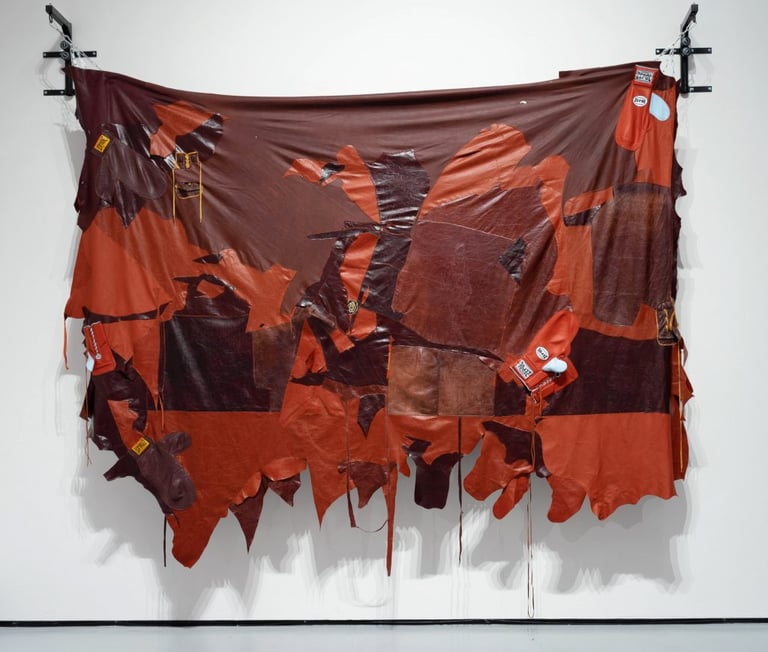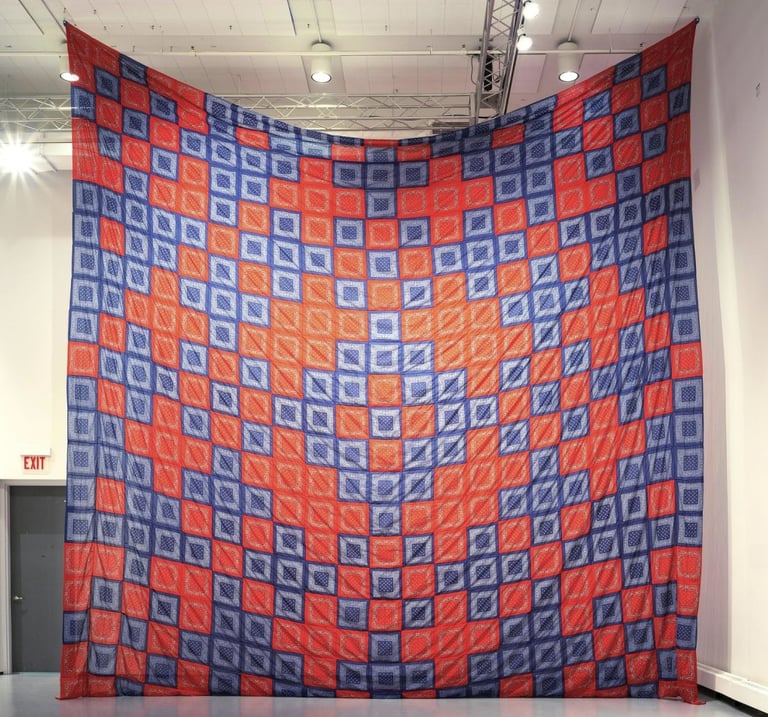On the Fringes: Interview with Esteban Ramón Pérez
Christal Perez
7/11/20193 min read


Is there strength being on the fringes, untied to the doctrines of disciplines? Artist Esteban Ramon Perez seems to be evidence that such an elusive positioning bears possibility. Having recently finished his final semester in the Graduate painting program at Yale University, his work can be read as biographical, but it does not solely lie within the realm of being hermetic – rather it offers a dialogue to coincide with the viewer. Part of the evocative quality of his work arises in the aesthetics that he borrows and excavates from, which are situated in his own personal history, but also the history of Mexicanidad at large. It is through his gestures, cuts and arrangements, that his work becomes almost like a collage of an elevation of personal and sociopolitical aesthetics.
DNA, 2019
After an inquiry of self-introspection during his first semester at Yale, Esteban pulled away from the limiting confines of the canvas and sought other ways to integrate the visual language he was interested in. His father, Jose Ramón Pérez, learned upholstery from a custom upholstery shop in Pasadena, CA that specialized in antiques. Thereafter he set up an upholstery shop in their home garage, and subsequently Esteban grew up learning the trade. “I stopped painting –at least with paint medium – and I started using materials that I’m very familiar with, because I’m an upholsterer, and I grew up in an upholstery shop; including leather, and textiles,” Esteban stated during the interview. He calls it his rebellious quality, to go against normative restrictions and expectations. This move away from the canvas and the traditional mediums of painting pushed his work towards sculpture, which he had an interest in prior to graduate school. The result of both painting and sculpture, two distinct mediums, being conflated is where his work flourishes. It too then becomes a poetic refusal against the categoric impulse, and perhaps one can make the argument, that like being Mexican-American, it is “ni de aqui, ni de alla,” a Spanish phrase that means neither from here nor from there.


Brown, 2016
His thesis at Yale lead him to subsequently collaborate with his father. The piece, “DNA” (2019), used the leather scraps that go unused by his father in his upholstery shop. These scraps, he mentioned, are remnants from the couches and chairs they would cover up. Because these scraps are curved, they are not suitable for upholstery, and for as long as he could remember, they would toss them in a box. He asked his father, who’s shop is in Upland, CA, if he could send them over to Yale, and he did. Esteban then worked intuitively, following the traces his father’s cuts had left on the scraps. “I really tried to stay true to his hand, so I worked within all of the cuts that he made, and didn’t alter the material in order to create compositions – that’s why its more intuitive. I started with what he gave me to see what I can do with it.” Esteban’s attention to his father’s marks were an influence, but he was also thinking about making a topographical landscape in the “DNA” piece. “I’m interested in the landscapes that are created to be very ambiguous and not necessarily a specific place, but I think that really depends on the context. We are in the United States, and I think it’s okay to see it as that [a map of the US],” Esteban mused.
Esteban’s work exists in a meditative atmosphere, while also being the product of research and questions posited against the narratives of history. His work asks for solemnity – a feat which is wholly merited. He stated during our interview, “I always thought about the process as being very important. Even after undergrad, I noticed that there is something magical about the in between, the before, and the after. Which is the process: the middle.”


Foo (Like FU), 2019
